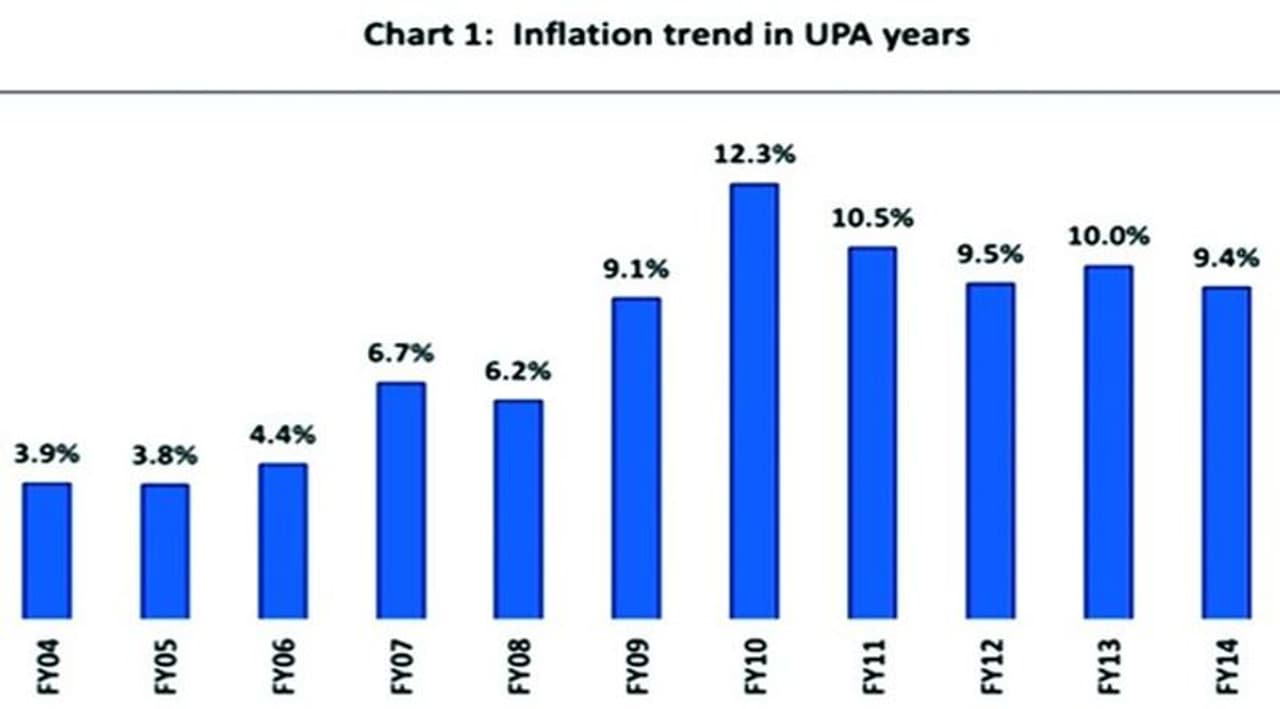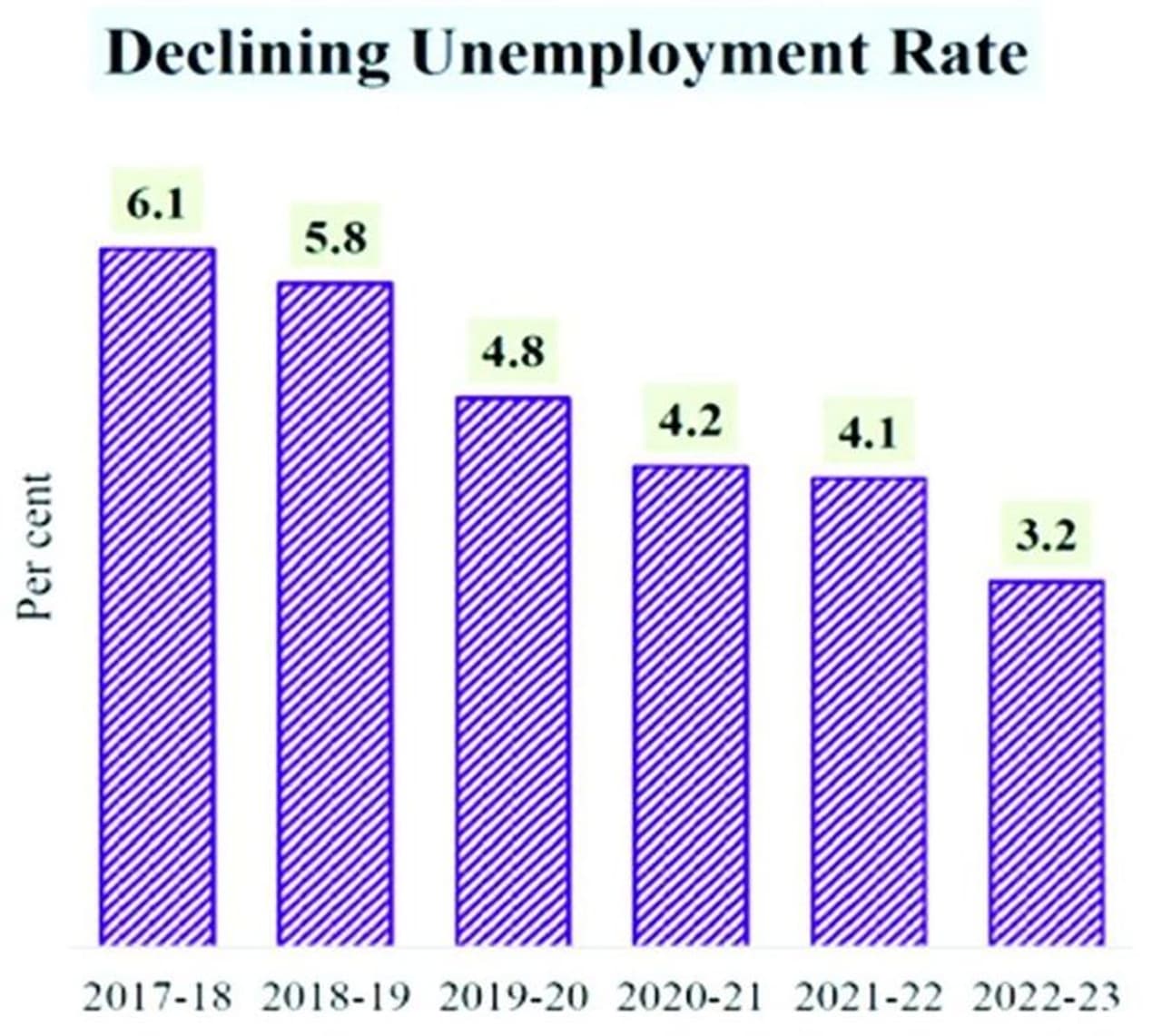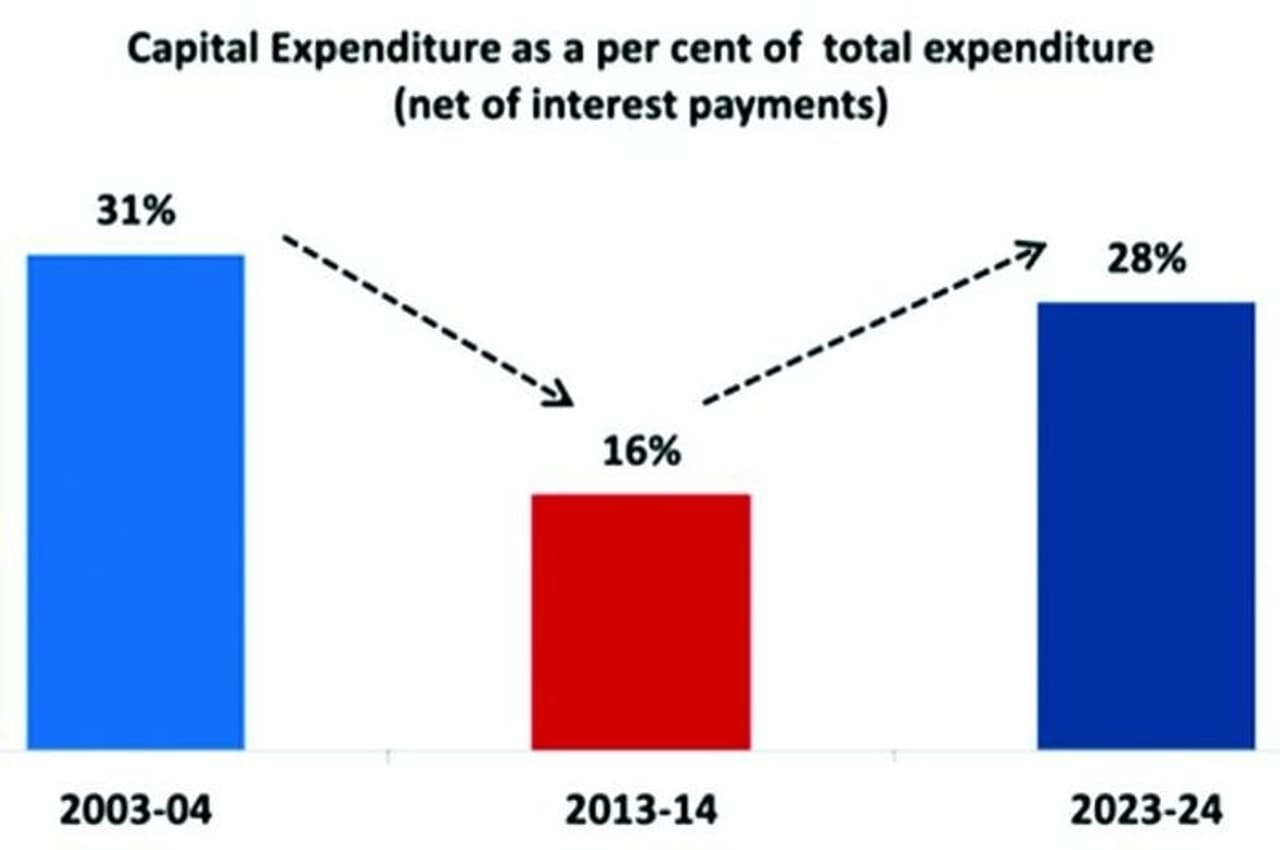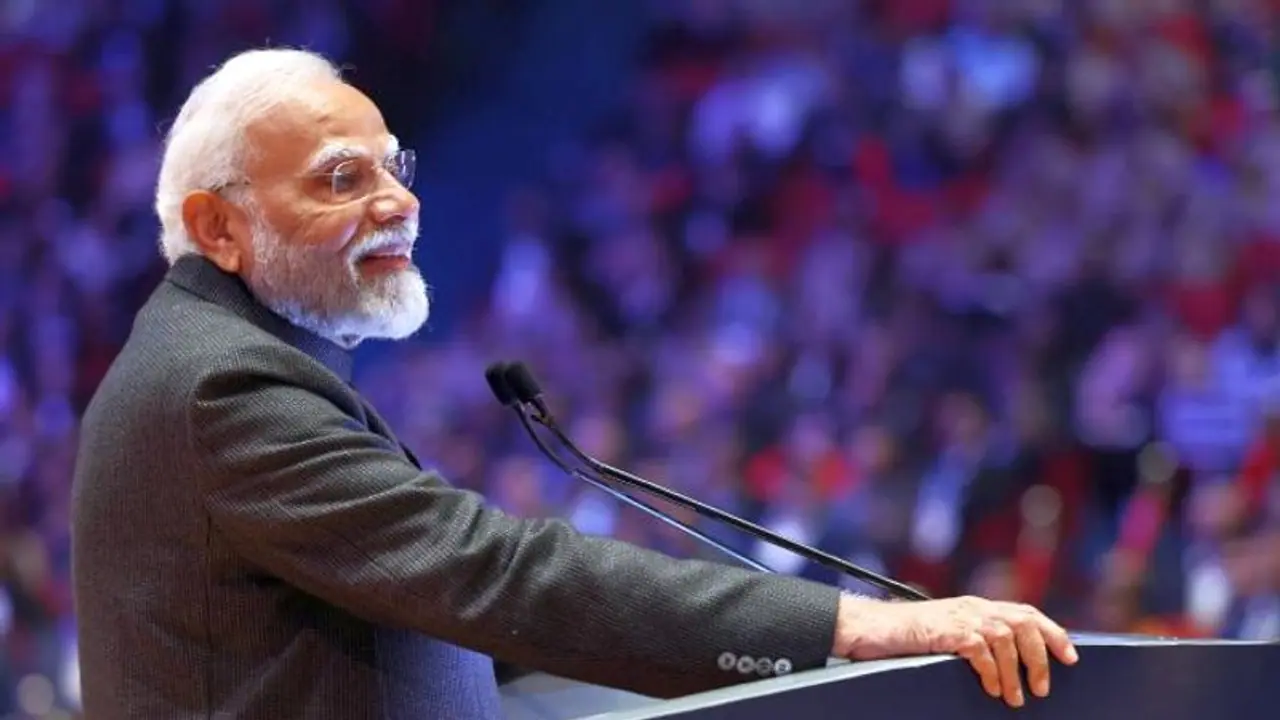In the grand narrative of the White-Black Paper debate, Prime Minister Modi's astute analogy rings true: the people of this nation would also consider this Black Paper, as a 'Kaala Teeka' cast by the Congress upon the BJP. S Gurumurthy explains
In a recent development, the Modi government released a comprehensive 'white paper' comparing its decade-long economic performance with that of the previous Congress-led coalition. According to official sources, the white paper emphasizes the significant strides made by the Modi administration in stabilizing an economy that teetered on the brink of bankruptcy during the Congress coalition era. It underscores unprecedented achievements in recent times, highlighting efforts to revitalize India's economic landscape. Acknowledging the challenges inherited from the previous administration, the white paper articulates the transformative measures implemented to rejuvenate the economy. The document underscores the Modi government's commitment to fiscal prudence, structural reforms, and strategic investments aimed at fostering sustainable growth and development.

In response, the Congress party issued a contrasting 'Black Paper' to counter the claims put forth by the government. However, notably absent from the Congress rebuttal is a denial of the economic turmoil prevalent in 2014 or the substantial progress achieved under the Modi regime. The Black Paper primarily revolves around allegations directed towards the Modi administration, lacking substantial counterproposals or alternative strategies.
Indubitable Verities
The Modi government's white paper boldly outlines three key facts, which the Congress's black paper neither disputes nor refutes. First and foremost, it references the acknowledgement made by the Congress government in its 2004-05 budget, praising the preceding Vajpayee government for leaving the economy in a robust state. This historical perspective lays the groundwork for understanding India's economic landscape during successive administrations.
Secondly, the white paper delves into the tumultuous period of the ten-year Congress coalition rule, characterizing it as a time marred by misguided policies and rampant corruption. The dire consequences of these shortcomings led to India's economy plummeting, drawing alarming comparisons from global financial institutions, which deemed it among the "five collapsing global economies." The acknowledgement of this economic downturn underscores the gravity of the challenges inherited by subsequent administrations. This too is not denied by the Black Paper.
The third salient point highlighted in the white paper pertains to the remarkable economic transformation witnessed during the ten-year tenure of the Modi regime. Despite facing formidable obstacles such as the COVID-19 pandemic and geopolitical tensions like the war in Ukraine, India's economy surged from the tenth to the fifth position globally. This unprecedented growth trajectory catapulted India to the forefront of economic prowess, securing its position as the world's fastest-growing economy—a testament endorsed by international financial institutions. The Black Paper did not deny this either.
In 2022, the International Monetary Fund (IMF) said "India deserves to be called a bright spot on this otherwise dark horizon (1), underscoring India's significant contribution to world growth. In December 2023, The IMF's commendation underscored India's pivotal role in global economic recovery, highlighting its significant contribution to world growth, it said, “India is a Star Performer contributing a remarkable 16% share of global growth” (2), In September 2023, Standard and Poor's (S&P), a renowned investment rating agency, echoed the IMF's sentiment by lauding India's robust economic growth. It said “India’s stellar economic trajectory alongside strong forecasts for some Southeast Asian countries will be important drivers for global growth” (3). S&P highlighted India's pivotal role in driving global economic dynamics, a stark contrast to the scepticism and ridicule India faced before Prime Minister Modi assumed office. Prime Minister Modi's transformative economic policies have been instrumental in elevating India's stature on the world stage. His visionary leadership and unwavering commitment to economic development have propelled India to unprecedented heights, making him a beacon of inspiration and a symbol of progress globally. It is noteworthy that these commendations from international organizations stand in stark contrast to the previous scepticism directed towards India. None of these are either countered in the Black Paper.
From Nadir to Zenith
Looking back at the economic landscape of India in 2014 unveils a stark reality that underscores the monumental growth witnessed under the leadership of the Modi regime. The transformation has not only been substantial but also verges on the miraculous considering the challenges that plagued the economy at the outset. In 2014, India's economic trajectory was marred by stagnation, fueled by rampant spending, budgetary disarray, and soaring inflation rates. The Congress-led government found itself mired in a state of paralysis, crippled by rampant corruption scandals and a glaring inability to make decisive actions. Multinational corporations faced bankruptcy, while banks grappled with mounting non-performing assets, rendering them unable to facilitate loans vital for economic expansion.
To exacerbate matters, the dearth of foreign exchange forced the government to resort to short-term foreign loans at exorbitant interest rates, exacerbating the downward spiral of the economy. The White Paper meticulously delineates these challenges, providing a comprehensive account of the economic abyss that India found itself in during that period. Importantly, the Black Paper fails to offer any substantive rebuttal or response to these issues raised in the White Paper, further underscoring the gravity of the economic predicament faced by the nation. Finance Minister Nirmala Sitharaman aptly articulated that it has taken a decade for India to emerge from the depths of despair. Despite the precipitous Economic Nadir, India has ascended to an unparalleled Zenith of development today, a testament to the resilience and resolve of its people and the transformative policies enacted under the stewardship of the Modi government.
Empirical Statistics
The statistics presented in the White Paper offer a compelling narrative of India's economic trajectory across different administrations. As the Vajpayee regime drew to a close in 2003-2004, inflation, previously at 2.1 per cent, surged to 12.3 per cent under the Congress regime by 2013.

Throughout the Congress tenure from 2009-2014, the average inflation rate peaked at 10.4%, whereas under the ten-year Modi regime, it plummeted to 5.5%. Notably, a significant trend emerges when analyzing the periods of Congress and BJP governance: prices surged during Congress rule and remained relatively subdued under BJP administration, warranting further scrutiny by the Congress party.
During the Congress rule from 1991-96, India faced an economic crisis. Conversely, the 1998-2004 BJP regime witnessed the Pokhran nuclear bomb test, leading to global economic and trade sanctions, posing significant economic challenges. Similarly, the 2004-2014 Congress era coincided with the global economic crisis of 2008. Despite encountering crises such as the COVID-19 pandemic and the Ukraine war during 2014-24, the Modi government effectively managed inflation, boosted growth, and made substantial strides in employment generation. Unemployment rates, which stood at 6.1% in 2017-18, have nearly halved to 3.2% by 2022-23 under the Modi government's tenure.

The rise in non-performing assets (NPAs) from 4.5% in 2009 to over 10% in 2014 under the Congress coalition government underscored the financial challenges inherited by the Modi administration. Renowned economist Raghuram Rajan, who embarked on the Bharat Jodo Yatra with Rahul Gandhi, highlighted the debilitating effects of bad loans on the banking sector.
A noteworthy statistical revelation lies in the increase of investment capital expenditure, rising from 16 per cent during the Congress coalition government to an impressive 28 per cent under the Modi government. This significant surge reflects the government's commitment to driving economic growth and development through strategic investments and initiatives.

The proactive measures undertaken by the Modi government, including substantial investments in banks and initiatives like universal bank account access, demonetization, and GST implementation, played pivotal roles in stabilizing the economy. These reforms facilitated a crackdown on corruption and tax evasion, fostering economic development and unleashing unprecedented growth. Media coverage extensively highlighted these statistics and their implications, which remain undisputed even in the Black Paper.
In essence, the multifaceted efforts of the Modi government, coupled with a stable banking sector, have underpinned India's economic resurgence and paved the way for transformative development projects unseen before in the nation's history. The statistics, as revealed in the White Paper and corroborated by media reports, underscore the remarkable journey of India's economic stabilization and growth under the Modi administration.
'Kaala Teeka' - Modi
Even preceding the release of the Modi government's white paper, the Congress unveiled its black paper. However, while the white paper was readily accessible on the government website, the black paper remained conspicuously absent. Media outlets disseminated the purported content of the Black Paper, with The Wire, a platform reportedly aligned with the Congress, claiming that it detailed a decade of economic ruin, escalating unemployment, agricultural degradation, rising crimes against women, and injustices against minorities and marginalized communities. What does this signify? Essentially, the Black Paper echoes the familiar criticisms that the Congress has levied against Modi's administration. It appears to be yet another endeavour to cast aspersions on Modi's governance without substantiated evidence, as has been the norm. In jest, Modi remarked that the Black Paper submitted by the Congress seemed more like a "Kaala Teeka" or a black mark on his government, highlighting the facetiousness of the situation.
Decade of Malfeasance Vs. Decade of Probity
The white paper meticulously catalogued a series of scandals that marred the 10-year Congress rule, including the infamous Coal Scam, Commonwealth Games Scam, 2G Scam, Saradha Group financial scandal, Devas-Antrix Scam, Embraer Aircraft Scam, Hawk Airlines Scam, INX media scandal, AgustaWestland helicopter scandal, and Adarsh housing debacle. These scandals incurred massive losses, amounting to lakhs of crores of rupees. In stark contrast, the 10-year tenure of the BJP, as portrayed in the white paper, stands out as a beacon of integrity and principled governance. The document vividly highlights the stark disparity between the two periods, depicting one as a pinnacle of virtue and the other as a nadir of moral degradation. Interestingly, the Black Paper, as reported by The Wire, appears conspicuously devoid of any substantive allegations of malfeasance against the BJP.
While the Congress finds itself embroiled in a mire of corruption, it fails to level even a single accusation against its political adversary. The irony is palpable: entrenched in corruption, the Congress lacks the moral high ground to impugn the BJP. One might wonder if Congress would have been better served by refraining from producing the Black Paper altogether. In the grand narrative of the White-Black Paper debate, Prime Minister Modi's astute analogy rings true: the people of this nation would also consider this Black Paper, as a 'Kaala Teeka' cast by the Congress upon the BJP.
Note to the Reader: This article originally appeared in Thuglak Tamil Weekly Magazine. It was translated into English by Thuglak Digital for www.gurumurthy.net. It has been reproduced in Asianet News Network.
